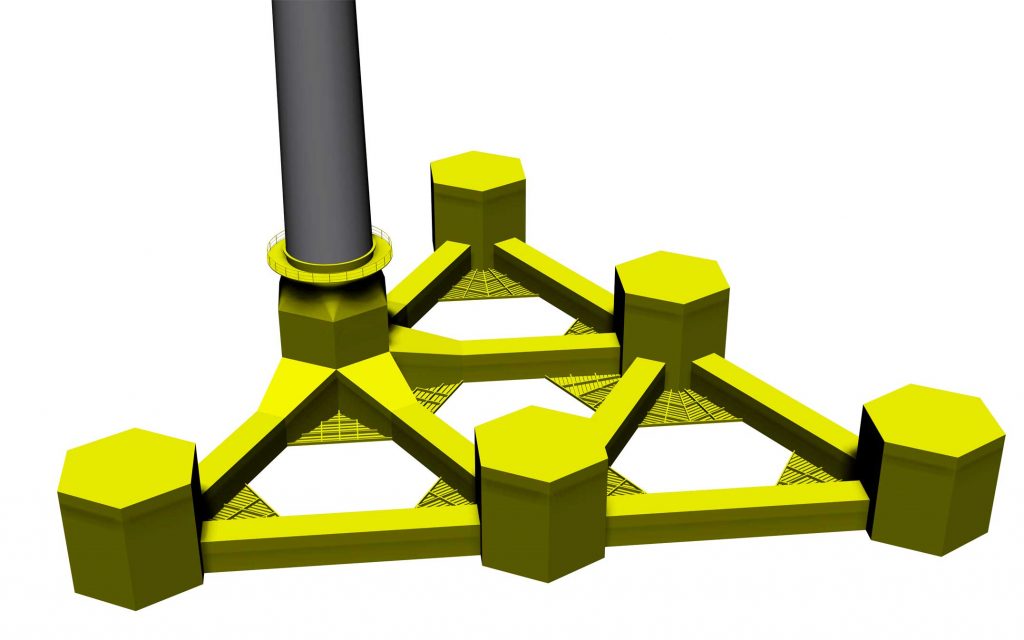
- Energy
- Marine
- Innovation
Categories:
Renewable energy is a key part of the road towards a sustainable future, and floating wind energy is one of the most promising ways to produce clean energy. In addition to being renewable and inexhaustible, floating wind energy offers significant benefits in terms of sustainability. Since it does not produce greenhouse gas emissions or air pollution, it helps reduce pollution and combat climate change.
The development of offshore wind power is entering a new phase thanks to the introduction of floating structures. This solution can be used to expand the installation areas beyond low depths, where solid foundations are the norm. Most usable wind areas are at greater depths, where solid foundations are inefficient from a technical and economic point of view. The force of the wind is much higher in the ocean than on land, due to higher average wind speeds and less turbulence thanks to the absence of obstacles.

HiveWind technology: an innovative approach to offshore wind power
Against this backdrop, Sener Renewable Investments and Nervión-Naval Offshore have created HiveWind, a semi-submersible steel platform that supports wind turbines in excess of 15 megawatts, and has been designed as an innovative and profitable floating foundation optimized for mass production in shipyards.
This concept was created after a long assessment of alternatives, and an analysis of the offshore wind market, which led to the design of an innovative and profitable floating foundation concept. The search for an optimized design that can be mass-produced at reduced costs seeks to satisfy the needs of a market that is already demanding this type of structure for the medium-term.
The HiveWind structure consists of six (6) hexagonal columns connected by arms in a parallel piped arrangement at the bottom, yielding the geometry of an equilateral triangle. The wind turbine is located in the central column of one of its sides, taking advantage of the outer columns of the vertices to brace the anchor lines and their connections to the floating platform itself.

HiveWind offers advantages not only in terms of construction, but also transportation, installation, operation and maintenance. The numerical models show that active ballast systems are not needed to guarantee stability, which reduces the complexity and maintenance costs. HiveWind also has a low draft, meaning it can be installed in more ports and make the projects more viable. In addition, tugs can transport the whole unit with the wind turbine to more ports of refuge, especially in projects with very rough seas.


 About us
About us











